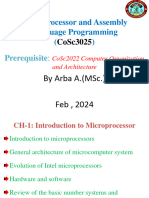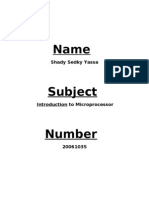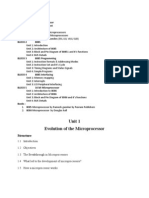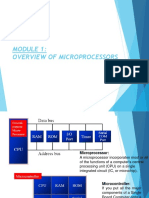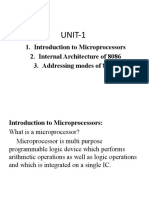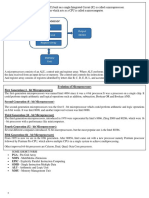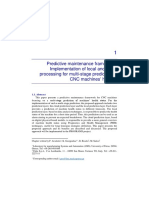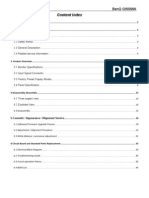Microprocessor:
• A Microprocessor is an important part of a computer architecture without which you will not
be able to perform anything on your computer.
• It is a programmable device that takes in input performs some arithmetic and logical
operations over it and produces the desired output.
• In simple words, a Microprocessor is a digital device on a chip that can fetch instructions from
memory, decode and execute them and give results.
Basics of Microprocessor –
A Microprocessor takes a bunch of instructions in machine language and executes them, telling
the processor what it has to do. Microprocessor performs three basic things while executing the
instruction:
• It performs some basic operations like addition, subtraction, multiplication, division, and some
logical operations using its Arithmetic and Logical Unit (ALU). New Microprocessors also
�• Data in microprocessors can move from one location to another.
• It has a Program Counter (PC) register that stores the address of the next
instruction based on the value of the PC, Microprocessor jumps from one
location to another and takes decisions.
Microprocessor structure
� Block Diagram of a Microcomputer
• A microprocessor consists of an ALU, control unit and register array.
Where ALU performs arithmetic and logical operations on the data
received from an input device or memory. Control unit controls the
instructions and flow of data within the computer. And, register
array consists of registers identified by letters like B, C, D, E, H, L, and
accumulator.
� Evolution of Microprocessors
We can categorize the microprocessor according to the generations or according to the size of
the microprocessor:
First Generation (4 - bit Microprocessors)
• The first generation microprocessors were introduced in the year 1971-1972 by Intel
Corporation. It was named Intel 4004 since it was a 4-bit processor.
• It was a processor on a single chip. It could perform simple arithmetic and logical operations
such as addition, subtraction, Boolean OR and Boolean AND.
• I had a control unit capable of performing control functions like fetching an instruction from
storage memory, decoding it, and then generating control pulses to execute it.
Second Generation (8 - bit Microprocessor)
• The second generation microprocessors were introduced in 1973 again by Intel. It was a first
8 - bit microprocessor which could perform arithmetic and logic operations on 8-bit words.
It was Intel 8008, and another improved version was Intel 8088.
�Third Generation (16 - bit Microprocessor)
• The third generation microprocessors, introduced in 1978 were represented
by Intel's 8086, Zilog Z800 and 80286, which were 16 - bit processors with a
performance like minicomputers.
Fourth Generation (32 - bit Microprocessors)
• Several different companies introduced the 32-bit microprocessors, but the
most popular one is the Intel 80386.
Fifth Generation (64 - bit Microprocessors)
• From 1995 to now we are in the fifth generation. After 80856, Intel came out
with a new processor namely Pentium processor followed by Pentium Pro
CPU, which allows multiple CPUs in a single system to achieve multiprocessing.
• Other improved 64-bit processors are Celeron, Dual, Quad, Octa Core
processors.
�Important Intel Microprocessors



